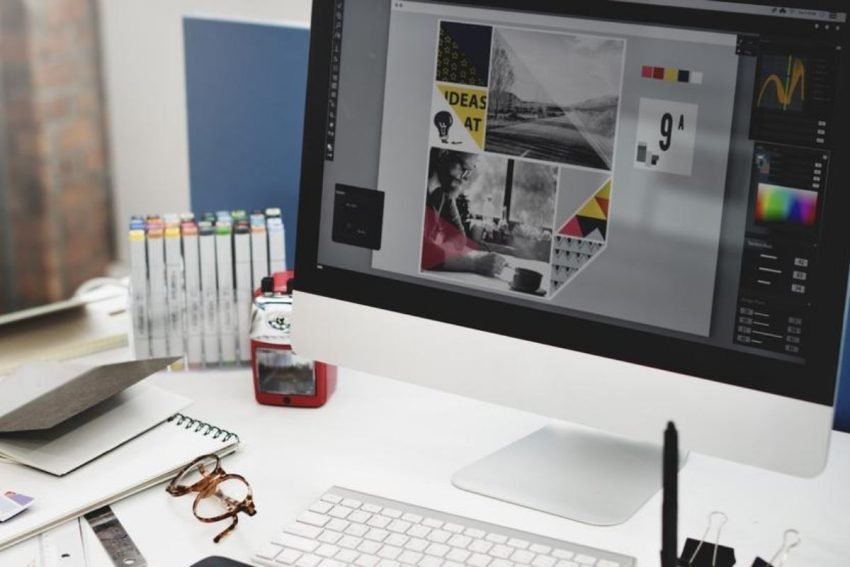Digital Design & Learning Tools Every Student Should Learn Before Graduation

Speedypaper can be a real lifesaver when time is tight. Many students feel stuck on big projects with strict deadlines, so turning to a website to help study can offer a lifeline. But beyond simple assistance, there are amazing digital design and learning tools that can spark creativity and improve a student’s path toward success.
Knowing how to work with an educational tool or online learning tool makes the difference between struggling and thriving. Whether students want to create stunning visuals or develop interactive projects, they must sharpen these skills before they graduate.
Some of these learning softwares might even lead to better job opportunities or help graduates build strong portfolios.
This guide will show ways to explore graphic design, video editing, and more. With clear tips and basic descriptions, students can grasp how these tools function and why they matter. It’s never too early to get started, so let’s dive in and see how each tool can shape a bright future.
Contents
Why These Tools Matter
Digital creation has become a vital skill in almost every field today. From marketing to education, design plays a part in telling stories and promoting ideas. Students who understand basic or advanced design steps stand out from others who lack these skills.
Beyond typical classroom lessons, learning tools empower students to think visually and solve problems with creativity. Each digital tool helps them develop a new layer of skill or refine an existing talent.
When they can make polished graphics or intuitive user flows, their projects often shine. Teachers often encourage using an educational tool like a graphics program or an online learning tool that offers tutorials. In many cases, these resources can lead to improved class performance and more energized engagement.
Even if someone is not planning to become a full-time designer, having command of these skills can open new doors. The result? A blend of creativity, problem-solving, and professional insights that will benefit each graduate in the real world.
Graphic Design Platforms
Graphic design apps form the cornerstone of digital creation. They help students craft eye-catching posters, social media images, or event flyers. Often, these platforms serve as a stepping stone for more advanced work. Students might start with free tools, testing color choices and layout ideas before moving on to professional programs. Many of these apps offer quick tutorials, so mastering basic design is not a daunting task.
One popular tool includes straightforward editing functions, layered graphics, and a library of ready-made illustrations. Such features let learners experiment without feeling stressed. Another option focuses on vector images that stay crisp at any size, which is crucial for logos.
By experimenting with these platforms, students gain an understanding of visual flow, color balancing, and text placement. Later, they can apply these skills in class projects, group tasks, or personal portfolios. Embracing graphic design platforms is a crucial move for any student looking to explore digital creativity.
Video Editing Software
Video is a powerful way to share stories, educate audiences, and explain ideas. Modern learning tools include software that lets students splice together clips, add music, and include cool transitions. This skill is a game-changer, especially for presentations or personal video projects in academic settings. Many free or low-cost programs exist, allowing students to experiment without heavy expenses.
Some platforms even guide beginners through timelines, clip arrangements, and built-in effects. As learners gain confidence, they can try advanced options like color correction or special visual tricks. Video editing also encourages creative problem-solving because it challenges students to present their messages with clarity and style.
When classmates or teachers watch well-produced videos, it can leave a memorable impression. Outside of school, these editing skills may lead to important roles in content creation or marketing. Regardless of major or interest, knowing how to craft a compelling video is a brilliant advantage in today’s world.
Web Design Basics
Web design involves more than coding. It blends color harmony, content layout, and user flow to create sites that people enjoy visiting. A student aiming to learn this art can start by testing simple drag-and-drop platforms. These platforms often come with built-in themes and step-by-step instructions, so first-time users don’t feel overwhelmed.
As comfort grows, learners can shift to a more advanced educational tool, exploring coding or design frameworks. Many who try these resources find that building a small personal website boosts their confidence.
It also makes them aware of what it takes to run an online learning tool or a portfolio site. Eye-catching websites require attention to detail, from image sizing to color themes that are easy on the eyes. By understanding site structure, future graduates can present their work in a modern format. They’ll also be able to fix small web issues, a handy ability in many careers.
3D Modeling Tools
Three-dimensional modeling shapes a wide range of fields, including gaming, architecture, and product design. Students who dive into 3D software can create virtual objects, manipulate shapes, and even prepare designs for printing. This area goes beyond standard two-dimensional images, requiring spatial thinking and precision.
Some learning softwares guide beginners through user-friendly interfaces, introducing them to the basics of polygons, texture mapping, and lighting. For a deeper exploration, robust programs can let advanced learners craft anything from futuristic cityscapes to mechanical parts. Though 3D might seem complicated, many find that these programs offer helpful tutorials.
These guided lessons break down processes step-by-step, letting learners practice at their own pace. Gaining skill with 3D modeling broadens a student’s creative range. It also looks impressive on resumes, especially for those aiming to join modern industries.
Whether it’s for a school project or a future job, knowing how to model in three dimensions can spark fresh opportunities.
Illustration and Drawing Software
Digital illustration blends art with technology. Students who enjoy drawing on paper can translate those skills into computer-based creations. Various online learning tool sites host lessons on brush settings, stylus usage, and layering techniques. These programs give artists a chance to experiment without worrying about wasted paint or smudged erasers.
Illustration software ranges from basic drawing apps to pro-level suites. Beginners can start by sketching simple shapes and learning about layering. Over time, they can explore shading, texture brushes, and vector-based approaches. The next step might include designing characters, storyboards, or branding elements. This experience also helps enhance fine motor skills and focus.
With practice, a student’s digital drawings can become just as expressive as traditional art. Using these tools in group projects or personal tasks can add a special flavor to any presentation. Future employers notice these abilities because they show versatility and passion for visual storytelling.
Collaboration and Project Management
Team projects are a big part of school life, and digital collaboration tools can make group tasks smoother. Programs designed for combined creativity allow multiple people to work on the same document or design in real time. This cuts down on confusion and messy file sharing. Students can see changes as they happen, chat about improvements, and build a positive team experience.
Project management platforms or shared design spaces can also track tasks and set clear deadlines. These features help each member stay focused on specific goals. With everything located in one place, it’s simpler to stay organized.
This approach prepares students for the workforce, where teamwork is the norm. Even a website to help study can include group boards or shared notes, ensuring everyone stays informed. When learners get comfortable with these collaborative setups, they also learn leadership skills, time management, and how to handle feedback. That balance of technical awareness and social harmony is vital for success.
Presentation Software
Sharing ideas in a clear, creative way is key to making a strong impact. Presentation software helps students build slides that look polished and professional. Some people stick to typical slide editors, while others try newer cloud-based systems. Many of these learning tools include fun templates, interactive charts, or transitions that add a spark to classroom talks.
Outside of class, these programs can help with pitch decks for clubs, big events, or personal projects. Smart use of animations or images can keep audiences engaged. Users can also weave short videos or audio clips into their slides, boosting the overall impact.
It doesn’t take much time to learn how these tools work, and they can be a big aid in boosting confidence when speaking in front of groups. Effective presentations can earn higher marks or lead to better teamwork. Once students explore these platforms, they might unlock new ways to share knowledge and creativity.
Mastering digital design skills before graduation is a key step toward success. A student who can handle image editing, video production, or even 3D modeling stands out in a crowded field. Employers value applicants who show they can use an educational tool with ease. Professors also admire students who go beyond basic projects, instead crafting elements that look truly professional.
Plenty of learning softwares give a starting point. Some are free, some require a small fee, but most can boost design knowledge in remarkable ways. A strong grip on these areas will help graduates adapt to changing demands. It’s also a chance to explore personal creativity and gain a sense of accomplishment.
Combined with group collaboration programs, these tools aid in building a real-world skill set that extends far beyond the classroom. With practice, curiosity, and a willingness to experiment, each student can become a resourceful creator who embraces design as a path to a bright future.



